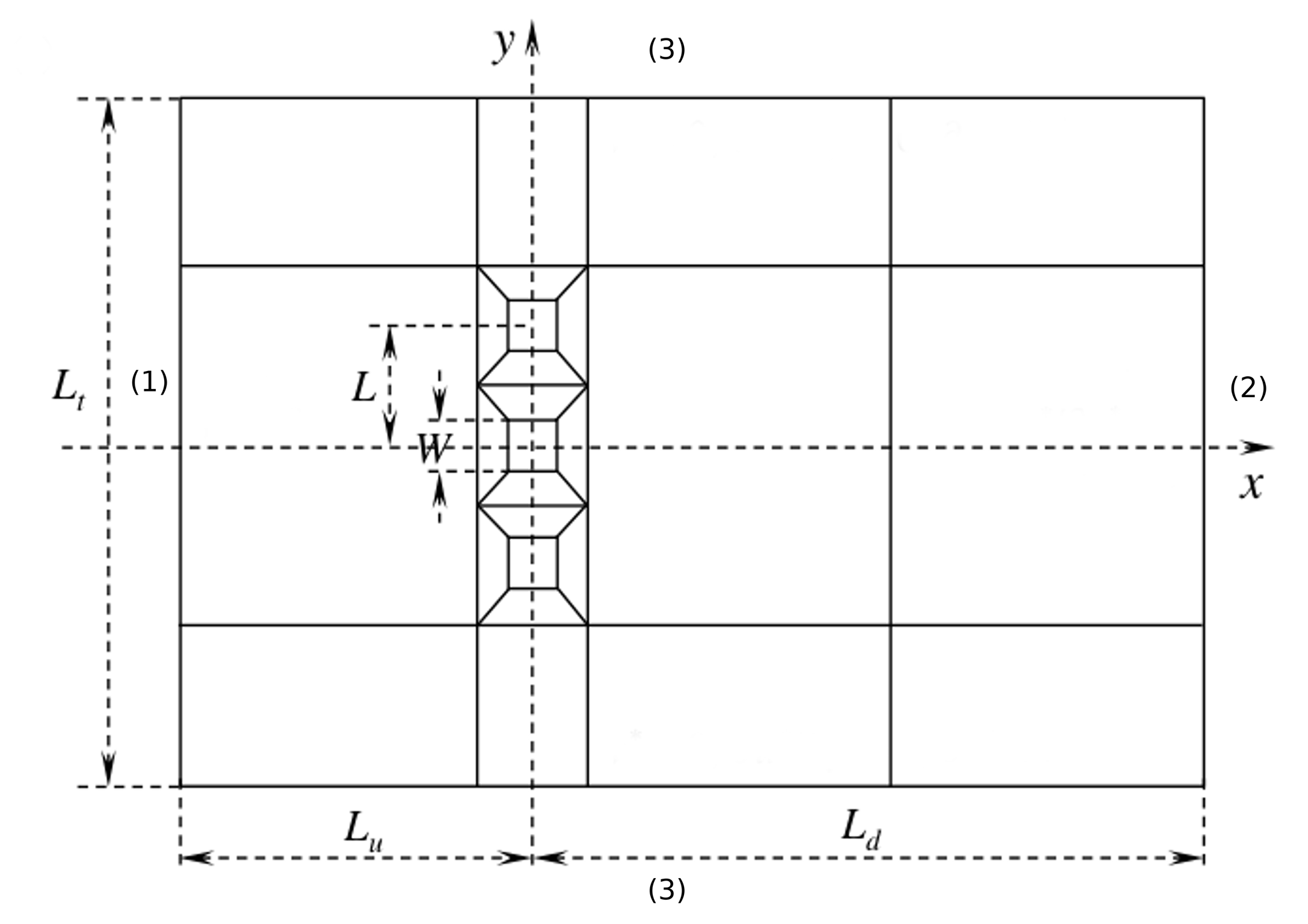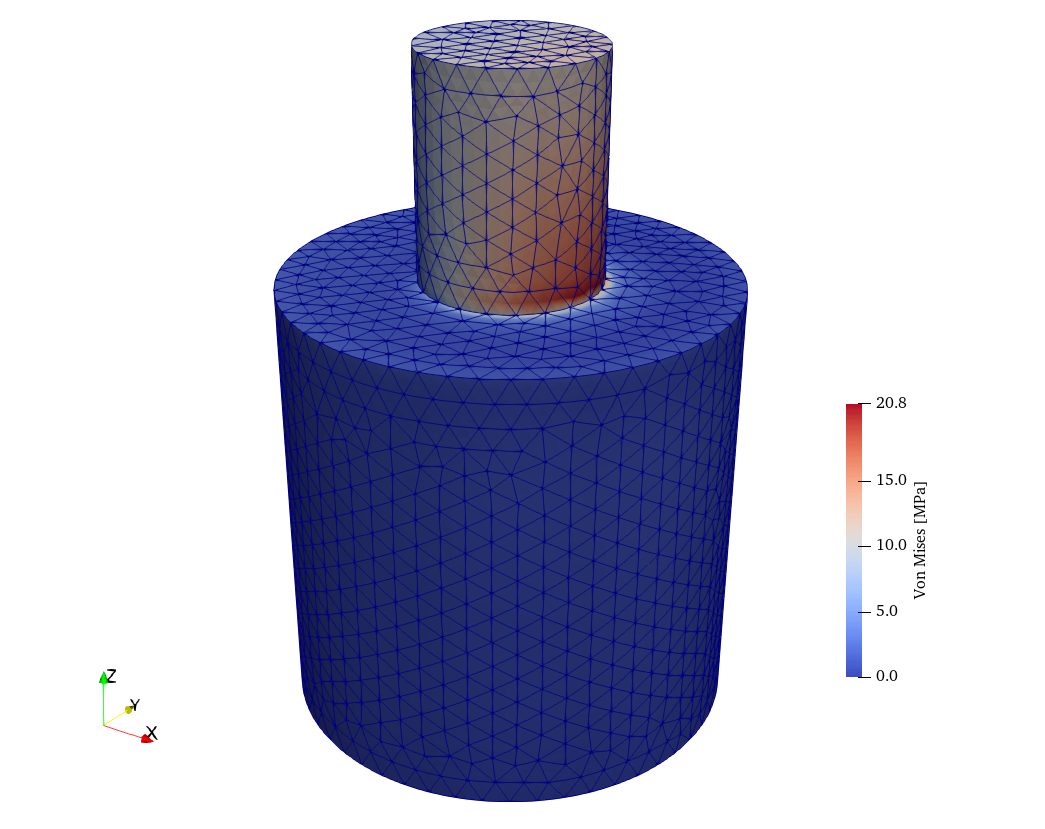

Region so its a good idea to play with the addNodes keword argument to This will lead to bad quality meshes for the boundary
Gmsh file flow around a cylinder generator#
This method will only work stable if the mesh generator (Tetgen) preservesĪll input boundaries. Mesh to the surface if necessary, e.i., no boundary on top of the grid. IsSubSurface ( boolean, optional) – Apply boundary conditions suitable for geo-simulaion and prolongate Marker ( int ) – Cellmarker for the cells in the boundary region Zbound ( iterable of type float ) – Needed for 3D grid prolongation and will be added the bottom side in opposit order on the top side in normal order. Ybound ( iterable of type float ) – Needed for 2D or 3D grid prolongation and will be added (2D bottom, 3D fron) in opposit order and (2D top, 3D back) in normal order. Xbound ( iterable of type float ) – Needed for 2D or 3D grid prolongation and will be added on the left side in opposit order and on the right side in normal order. Grid ( GIMLI::Mesh) – 2D or 3D Mesh that must contain structured quads or hex cells Note, the input grid needs to be a 2d or 3d grid with quad/hex cells. appendBoundaryGrid ( grid, xbound = None, ybound = None, zbound = None, marker = 1, isSubSurface = True, ** kwargs ) ¶ Interpolate 2D tape measured topography to 2D Cartesian coordinates.Ĭreate a subsurface object from pygimli mesh.ĪppendBoundaryGrid ¶ shtools. SyscallTetgen(filename)Ĭreate a mesh from a PLC by system-calling Tetgen. Refine mesh of quadrangles into a mesh of triangle cells.

Refine mesh of hexahedra into a mesh of tetrahedra.

Read and convert a mesh from the basic Tetgen output. Read STL surface mesh and returns a GIMLI::Mesh. Read in a piece-wise linear complex object (PLC) from. ReadHDF5Mesh(fileName)įunction for loading a mesh from HDF5 file format. Read Gmsh ASCII file and return instance of GIMLI::Mesh class. Return the quality of a given triangular mesh. Merge several meshes into one new mesh and return the new mesh.Īssuming data DOCUMENT_ME Merge two meshes into one new mesh and return the combined mesh. InterpolateAlongCurve(curve, t, **kwargs) Prolongate empty cell values to complete cell attributes.Ĭonvert subsurface object to pygimli mesh. Write STL surface mesh and returns a GIMLI::Mesh.Įxtract 2d mesh from the upper surface of a 3D mesh.Ĭreate 3D body by extruding a closed 2D poly into z directionįillEmptyToCellArray(mesh, vals) Writes given GIMLI::Mesh in a hdf5 format file.Įxport a piece-wise linear complex (PLC) to a. Generate simple three dimensional mesh with nodes at position in RVector x and y.Ĭreate a new 2D triangular mesh from the boundaries of mesh.Ĭreate parameter mesh from list of sensor positions.ĬreateParaMesh2DGrid(sensors)Ĭreate a grid-style mesh for an inversion parameter mesh.ĬreateParaMeshPLC(sensors)Ĭreate a geometry (PLC) for an inversion parameter mesh.ĬreateParaMeshPLC3D(sensors)Ĭreate a geometry (PLC) for an 3D inversion parameter mesh.Ĭreate surface mesh for an 3D inversion parameter mesh.ĬreatePolygon(verts)Ĭreate a polygon from a list of vertices.ĬreateSurface(mesh)Ĭonvert a 2D mesh into a 3D surface mesh.ĬreateWorld(start, end)Ĭreate simple rectangular 2D or 3D world.Įxports Gimli mesh in HDF5 format suitable for Fenics.ĮxportHDF5Mesh(mesh, exportname)

Generate simple two dimensional mesh with nodes at position in RVector x and y. Generate 1D block model of thicknesses and properties Generate simple one dimensional mesh with nodes at position in RVector pos.ĬreateMesh1DBlock(nLayers ) Return a copy of mesh surrounded by a tetrahedron mesh as boundary.ĪppendTriangleBoundary(mesh)Īdd a triangle mesh boundary to a given mesh.ĬonvertHDF5Mesh(h5Mesh)Ĭonverts instance of a hdf5 mesh to a GIMLI::Mesh.ĬreateCircle()ĬreateCube()ĬreateCylinder()ĬreateFacet(mesh)Ĭreate a coplanar PLC of a 2d mesh or polyĬreateGridPieShaped(x)Ĭreate a 2D pie shaped grid (segment from annulus or cirlce).ĬreateMesh(poly)Ĭreate a mesh for a given PLC or point list. Return a copy of grid surrounded by a boundary grid.ĪppendTetrahedronBoundary(mesh)


 0 kommentar(er)
0 kommentar(er)
